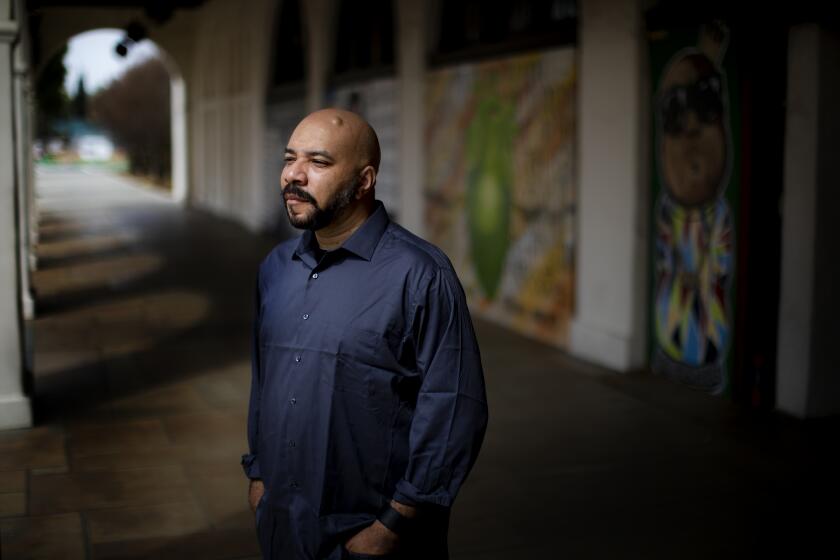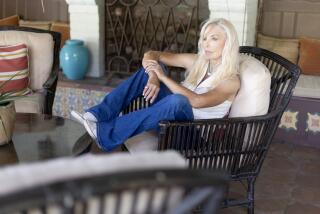For Wonder Woman’s 80th birthday, a graphic anthology honors female icons from Beyoncé to Serena
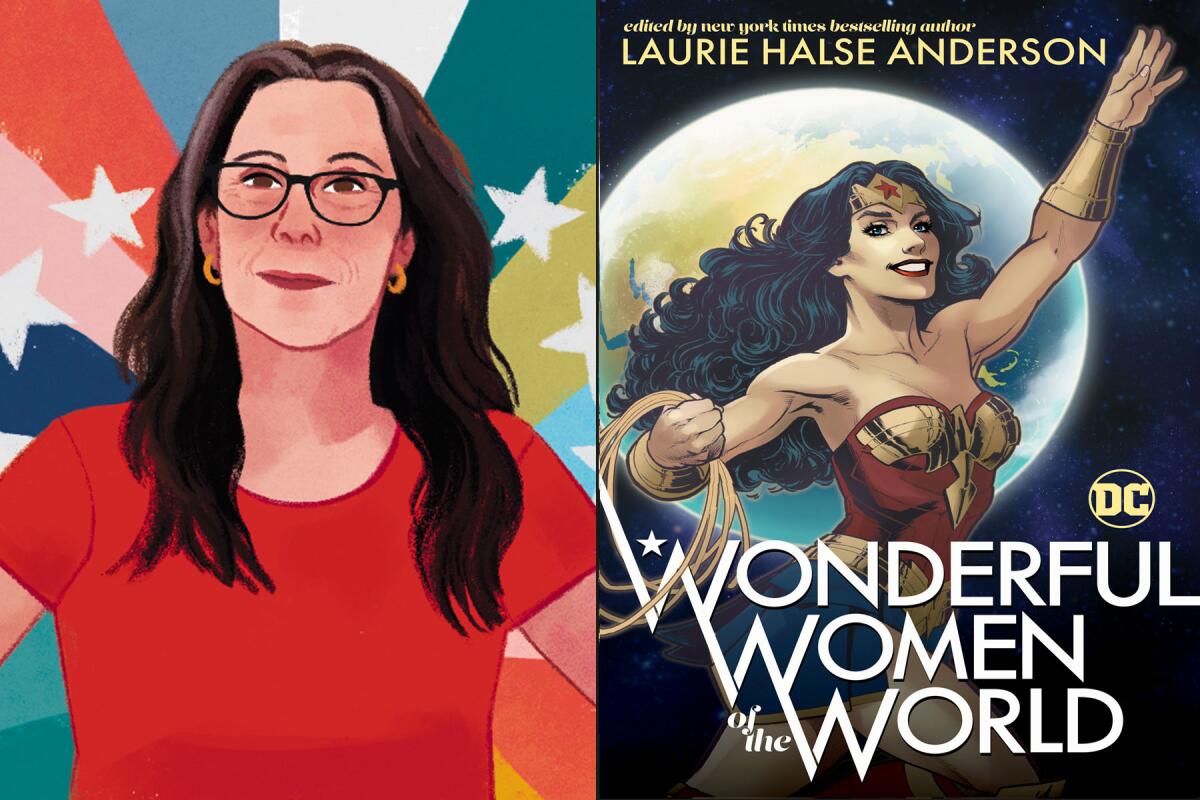
- Share via
On the Shelf
Wonderful Women of the World
Edited by Laurie Halse Anderson
DC Comics: 200 pages, $17
If you buy books linked on our site, The Times may earn a commission from Bookshop.org, whose fees support independent bookstores.
Princess Diana of Themyscira, better known as Wonder Woman, is considered a member of the holy trinity of DC Comics heroes — next to Batman and Superman — and hailed as an icon of strong women everywhere. Celebrating her 80th birthday this fall, DC has decided to spotlight 23 women who embody the spirit of the heroine in a book out next week, “Wonderful Women of the World.”
Among the subjects profiled in the anthology, edited by Laurie Halse Anderson with a cover by Wonder Woman artist Nicola Scott, are Beyoncé, Serena Williams, Ruth Bader Ginsburg, Greta Thunberg and Malala Yousafzai.
Creators of the illustrated essays include DC veterans Corinna Bechko, Cecil Castellucci, Amanda Deibert, Kami Garcia, Cat Staggs, Danielle Paige and Magdalene Visaggio. Among the writers fresh to DC are Sheena Howard, author of “Why Wakanda Matters”; “Hood Feminism” author Mikki Kendall; and YA novelist Marieke Nijkamp.
A new generation of Black artists is amending and countering comic books’ racist roots. They join a proud tradition of Black pioneers.
Their subjects hail from diverse fields (and they aren’t all household names) but they share qualities embodied by Wonder Woman: a sense of compassion, a yearning for justice and a strong moral code. Anderson spoke with The Times in a video call, in a conversation edited for clarity and length, about how she wrangled the creators, how the pandemic shaped the book and why her mother didn’t like Wonder Woman.
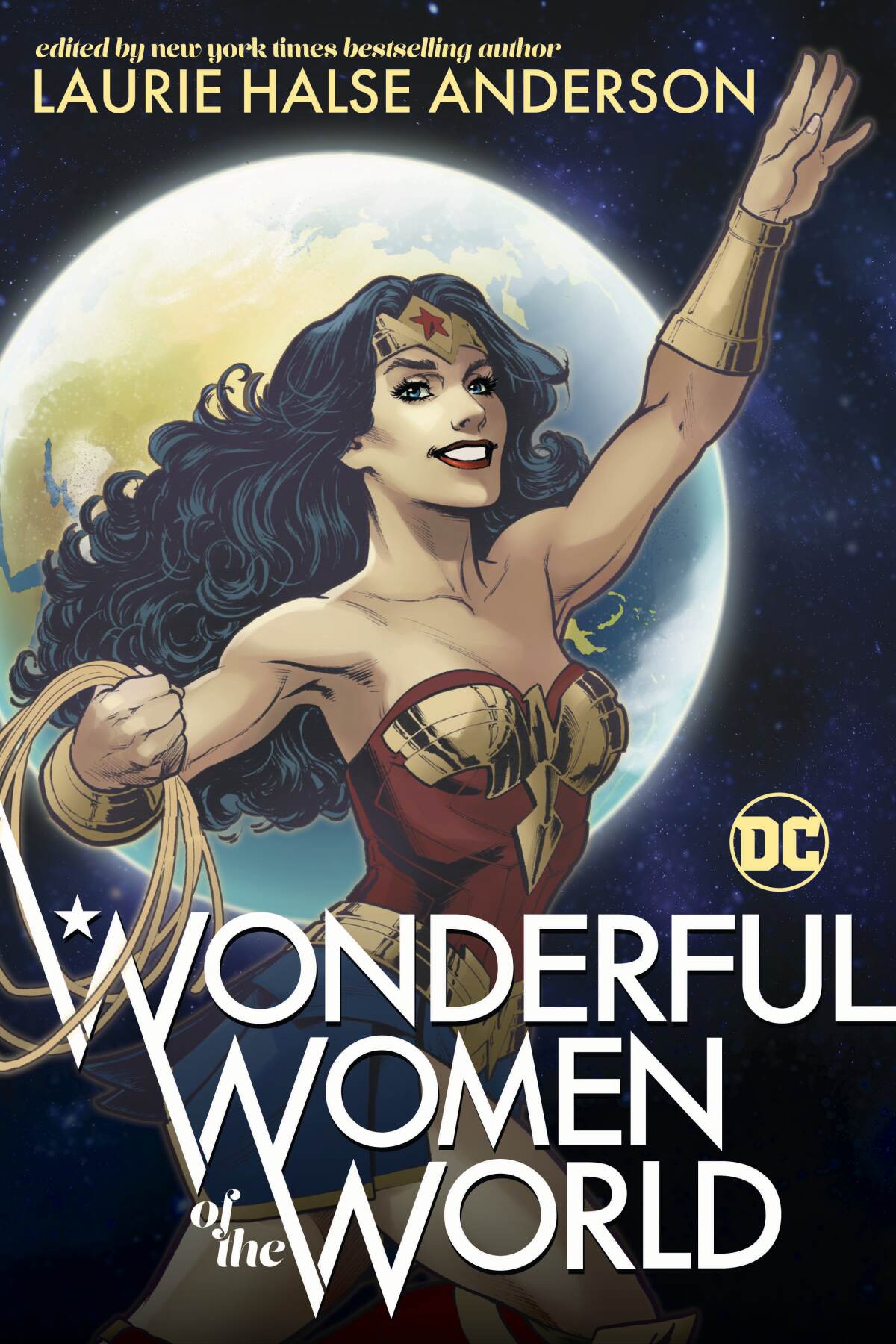
It must have taken a heck of a brainstorming session to whittle down a list of wonderful women.
You know, one of the things that I have most enjoyed in my career — I started in the traditional publishing world, and now this is my second book with DC — is collaborating with other people, which we don’t really see much in traditional publishing. If they’d let me, the book would have been like this [spreads out her arms] ginormous thing, but cooler heads prevailed. We knew from the beginning that we wanted to spotlight women from all over the world, and we wanted to represent all communities, not only in the women we were featuring but also in the creative teams.
How did you put those teams together?
I brought in a lot of creators that I was familiar with, like Danielle Paige, Kami Garcia, Olugbemisola Rhuday-Perkovich — best name in the whole world — and Traci Sorell. Just women I know and I’ve met at conferences and whose books I admire. I am not as great on illustrators, but thankfully I was working with people from comics so they not only had a bunch but they knew who they wanted to tap for lettering.
Danielle Paige made Dorothy from Kansas an evil tyrant in “Dorothy Must Die” and put a girl named Snow — who will grow up to be the Snow Queen — in a mental institution in “Stealing Snow.”
You were editing, I assume, during the pandemic. How did this affect the book?
It actually made the book even more important to me, I think, because I was really struggling, especially in the first five, six months, with depression and worrying about my kids and things like that. The book reminded me of reading books when I was younger — when you would read a book for sanctuary. And to be able to work on a project with great people, about great people, really was a wonderful gift.
Do you have a favorite Wonder Woman story that illustrates her specific brand of heroism?
Whenever I talk about Wonder Woman, I have to think about who I was when I was 10, because she was such a significant part of my identity — a very different kind of identity than I was seeing around me. My favorite story in this book is about Mari Copeny from Flint, Mich., because it’s a story of a child. A child who is centered in a family and a community filled with compassion and love, and that can see injustice, can see government corruption, and feels the call to make things better. When people are young, that’s when we have the opportunity to reach them, before they’ve gotten beaten up by the world. There’s a great little thought bubble at the end of that story where Mari is a little bit older. She’s speaking to a roomful of kids, and this one kid sitting on the floor has this bubble that says, “Mari for president 2044.” And I said, “Yes, that’s exactly what I think we’re working for.”
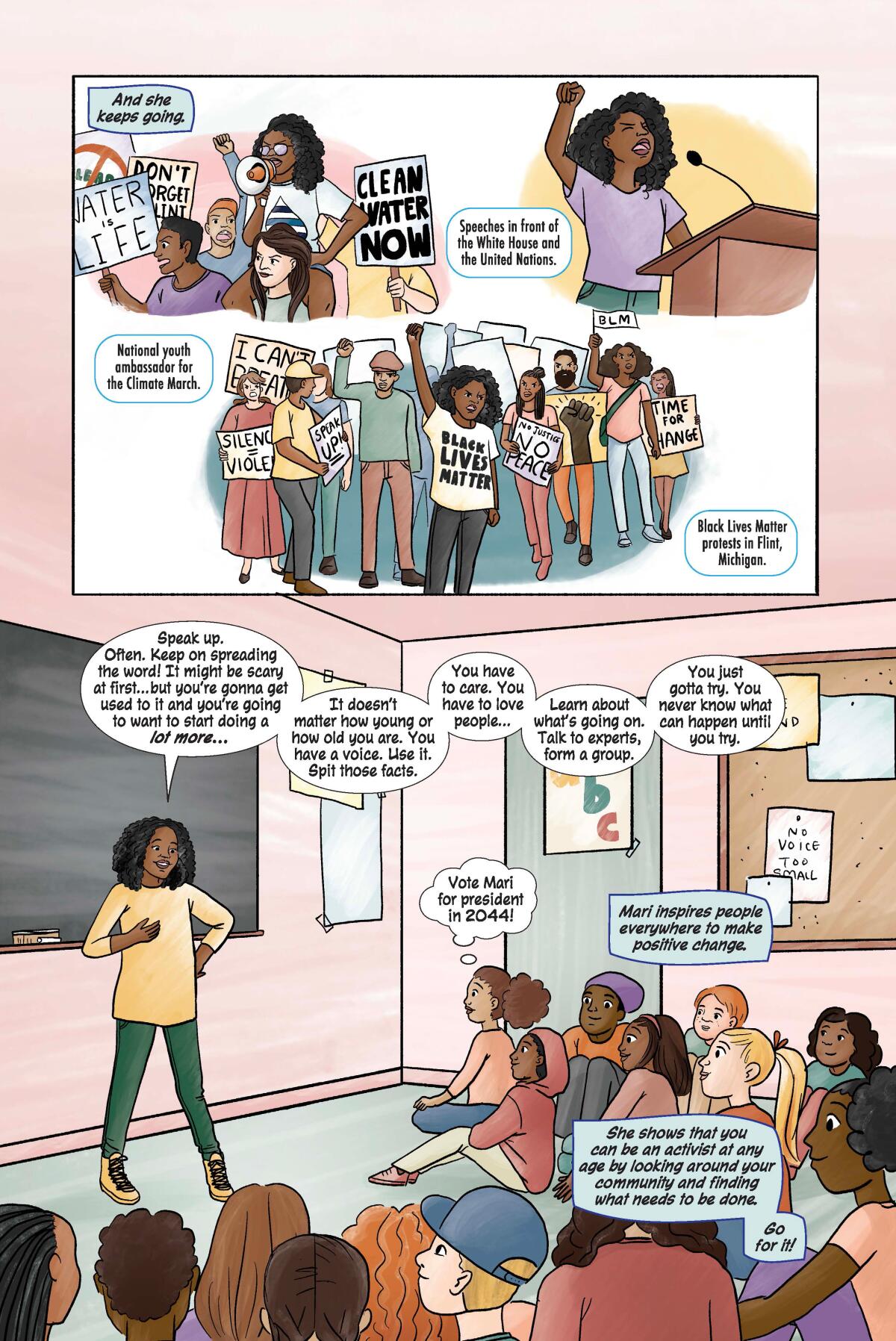
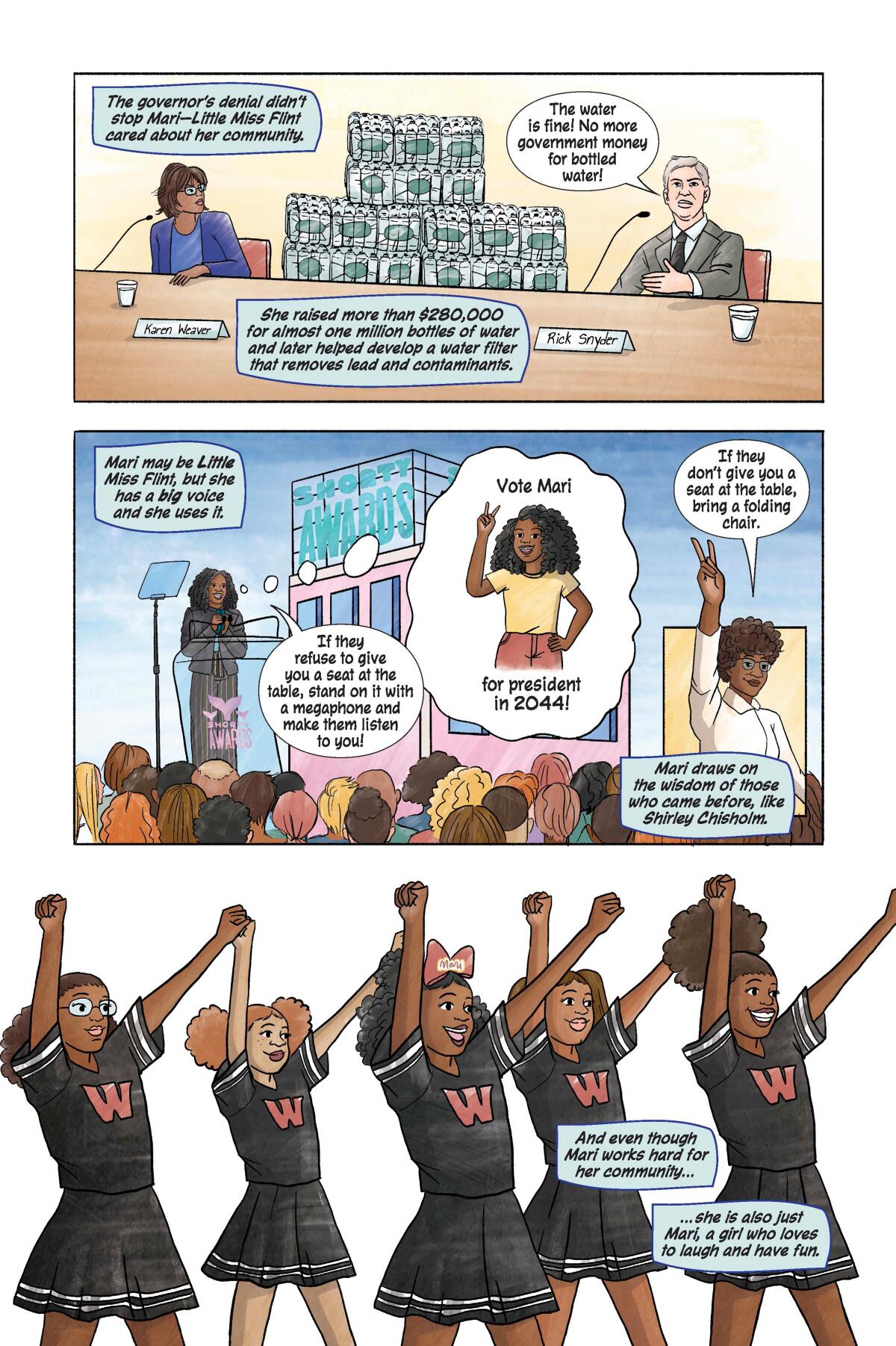
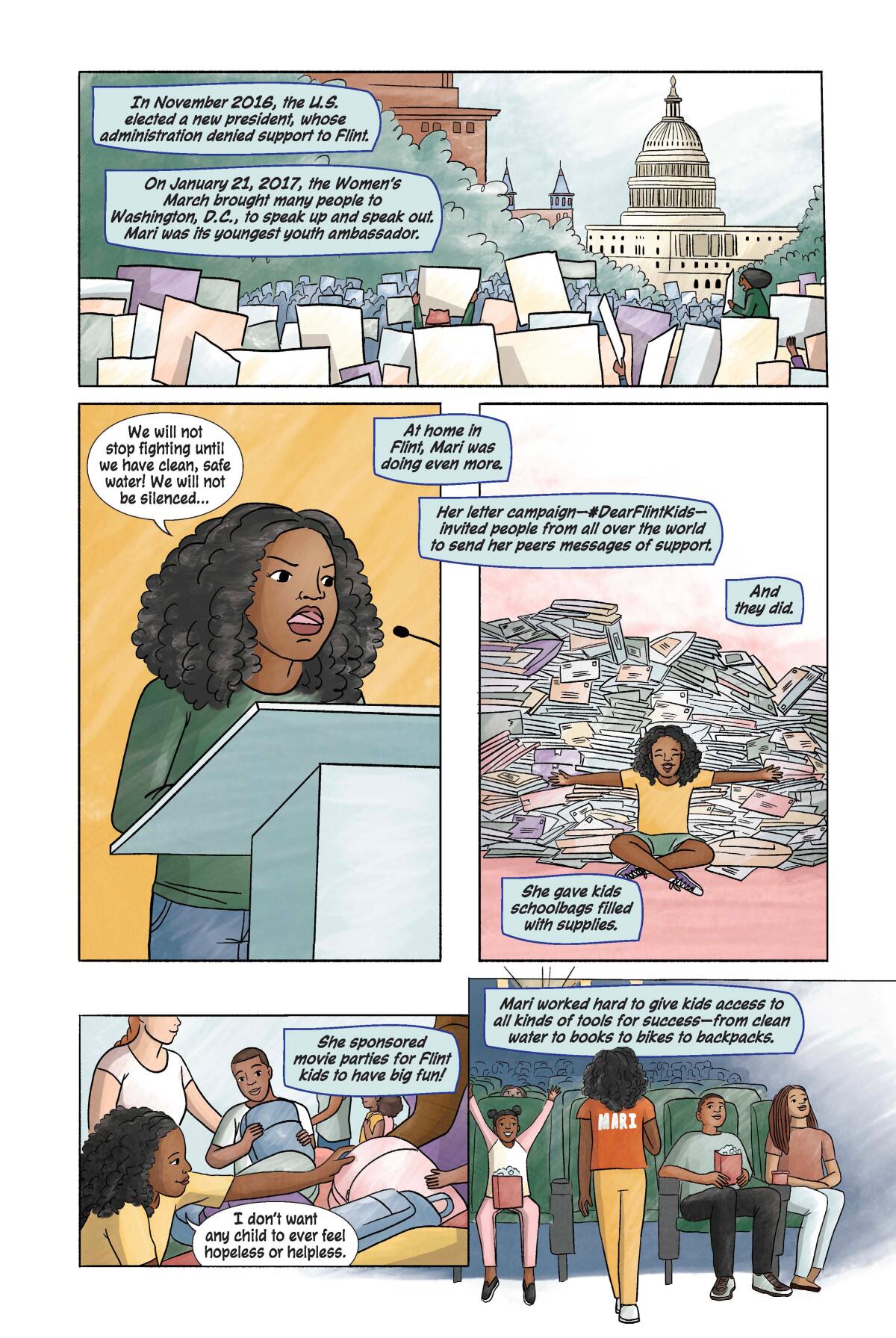
I was going to ask about a standout profile, so I’m glad you answered it. But no specific Wonder Woman comic book storylines?
Oh, man. You know, my mom wouldn’t let me buy them when I was a kid.
What?!
Because she was muscular, and my mother really wanted me to be a feminine woman. I dedicated “Tempest Tossed” [“Wonder Woman: Tempest Tossed,” a graphic novel written by Anderson] to my mother, in honor of her memory, because she could only know what she knew growing up in the world that she grew up in. [“Tempest Tossed”] is not just a story of a young Wonder Woman coming of age. In today’s world, it was also an examination of the moment that somebody gets to begin to recognize their privilege. Coming from this amazing island of Themyscira — which I would just love to visit and stay the rest of my life in — she comes to our world, to Queens in New York City, and she finds out that it’s not fair. There’s evil, and there’s all these things that fly in the face of everything she learned. I think a lot of children in our world don’t have privilege at all, but you know there is that moment when they open their eyes and they go, “Oh, this is so wrong.” And it’s that moment [that] I think the reader and the viewer solidly identify with. Too often we get older and we’re like, “Oh, that’s just the way it is.” Comics, especially with wonderful art, take us back to those years where you think, “Maybe I could make a difference.” And if we can learn to hang on to that piece of us, then we truly can.
José Delbo, an 87-year-old comic artist, sold more than $1 million worth of Wonder Woman NFTs. Sales like his got the attention of DC Comics and Marvel. The debate over NFT winners and losers.
This is also a spotlight on women in comics. How does it reflect your experiences in this domain long dominated by men?
I’ve heard stories from female illustrators. I’m of a certain age, and I would have thought that by now we would have gotten past those stories. But we haven’t. However, we’re in this moment of hopefully positive change in a lot of different aspects in our culture. At the back of the book we have huge, huge pages devoted to both creators — the artist and the writer. So we’re trying to lift them up as much as they lifted up the girls and women in these stories. I think that’s really important. And don’t get me wrong, I am very fond of boys and men, I’m very fond of people who identify with whatever gender, but I really need some equity in our world, and a book like this can make a start.
More to Read
Sign up for our Book Club newsletter
Get the latest news, events and more from the Los Angeles Times Book Club, and help us get L.A. reading and talking.
You may occasionally receive promotional content from the Los Angeles Times.
